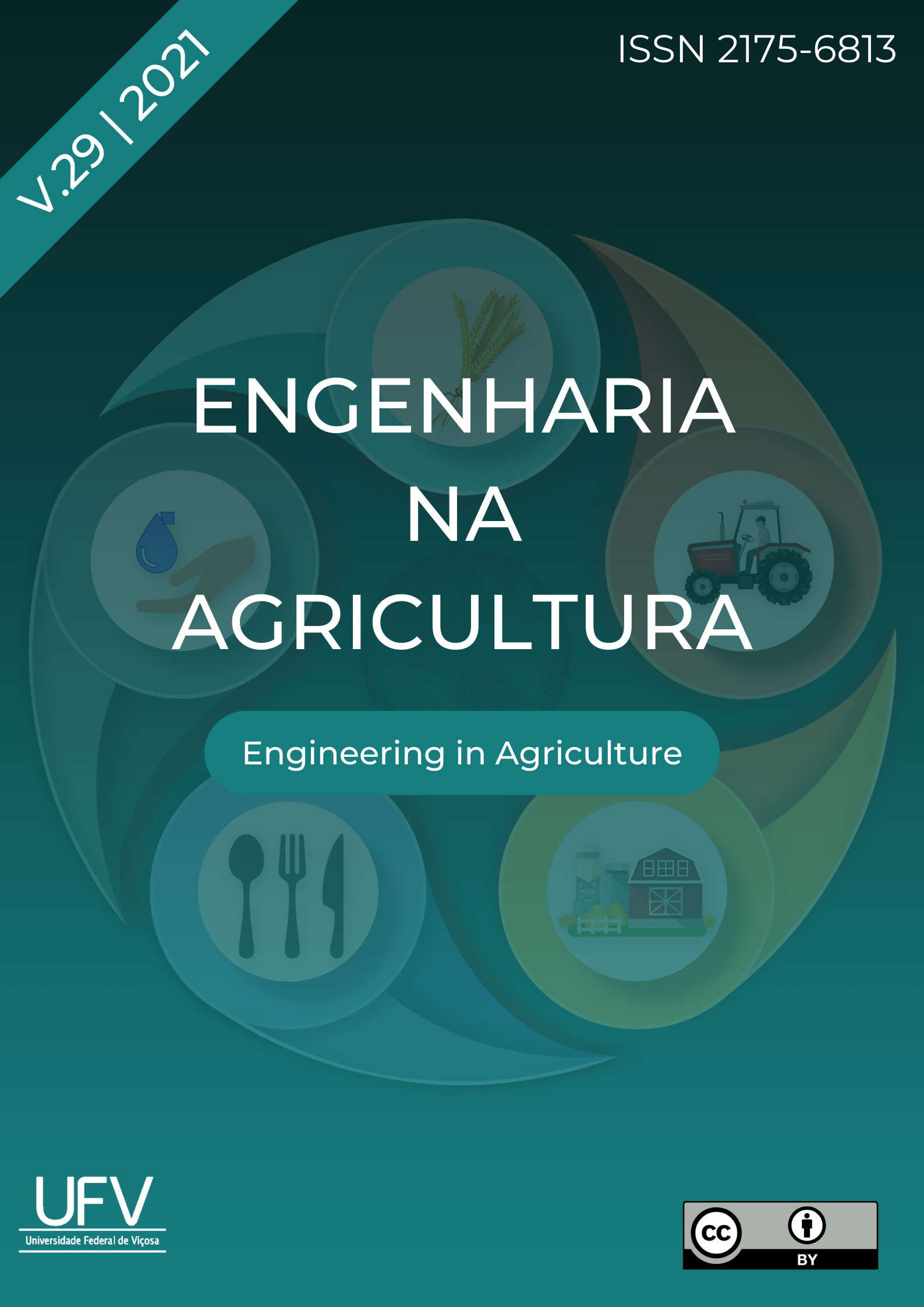Can portable analyzers be reliable for biogas characterization?
DOI:
https://doi.org/10.13083/reveng.v29i1.11575Palavras-chave:
Covered lagoon biodigesters, Biogas, Anaerobic digestion, Methane, Pig farmingResumo
Anaerobic digestion for treatment of swine wastewater is an attractive alternative, among other aspects, for the generation of biogas. This gas is composed predominantly of methane and can be converted into electrical and thermal energy. However, the knowledge of the biogas composition is of paramount importance, especially regarding the methane content due to its energetic properties. The alternatives for this determination usually require high cost and specialized technicians. Therefore, the search for simple and low cost alternative solutions and techniques can improve the biogas use as an energy source and favor energy sustainability in pig farming. The present study aimed to compare the results of the methane composition of a portable analyzer with that of a Gasboard gas analyzer. The biogas was collected and characterized in a full cycle swine farm from January to December 2019 in the municipality of Teixeiras (MG), Brazil. The methane composition values did not differ statistically for a 5% significance level between the evaluated methods. The use of the portable kit is a simple and low cost alternative in determining the methane content in biogas and can be used reliably.
Downloads
Referências
ALFAKIT. Disponível em https://alfakit.com.br/produtos/kit-analise-de-biogas-cod-3819/ Acesso em 28/12/2020.
BRASIL. Secretaria Nacional de Saneamento Ambiental. Probiogás. Tecnologias de digestão anaeróbia com relevância para o Brasil: substratos, digestores e uso de biogás. Brasília, DF: Ministério das Cidades, 2015.
KUNZ, A.; SULZBACH, A. Kit biogás portátil. Concórdia: EMBRAPA – CNPSA, 2007.
GOMES, A. F.; MARTINS, M. A.; PEREIRA, E. G. Simulação computacional de dispositivos de mistura em câmara de combustão para gases de carbonização. Ciência Florestal, v.29, n.2, p.673-684, 2019.
LEITÃO, F. O.; SILVA, W. H. Geração de energia e renda a partir do tratamento dos resíduos da suinocultura. IGepec, v. 22, n.1, p.116-132, 2018.
ORTIZ-SANCHEZ, M.; SOLARTE-TORO, J.; GONZÁLES-AGUIRRE, J.; PELTONEN, K. E.; RICHARD, P.; ALZATE, C. A. C. Pre-feasibility analysis of the production of mucic acid from orange peel waste under the biorefinery concept. Biochemical Engineering Journal, v.161, p.107680, 2020.
PINÃS, J. A. V.; VENTURINI, O. J.; LORA, E. E. S.; OLIVEIRA, M. A.; ROALCABA, O. D. C. Aterros sanitários para geração de energia elétrica a partir da produção de biogás no Brasil: comparação dos modelos LandGem (EPA) e biogás (CETESB). Revista Brasileira de Estudos de População. Rio de Janeiro, v.33, n.1, p.175-188, 2016.
R Core Team. R: A language and environment for statistical computing. 2013.
SILVA, J. A. R.; TERRA, A. B. C.; ASSIS, C.; FLORENTINO, L. A.; PUTTI, F. F.; Tratamento de dejetos no Brasil: Comparativo entre as técnicas de compostagem e biodigestores anaeróbios. Revista em Agronegócio e Meio Ambiente. Maringá, v.13, n.2, p.797-817, 2020.
SRIWURYANDARI, L.; EKAPUTRA, P. A.; SINTAWARDANI, N. Gas production in anaerobic dark-fermentation processes from agriculture solid waste. E&ES, v.60, n.1, p. 012030, 2017.
Downloads
Publicado
Como Citar
Edição
Seção
Licença
Copyright (c) 2021 Revista Engenharia na Agricultura - Reveng

Este trabalho está licenciado sob uma licença Creative Commons Attribution-NonCommercial 4.0 International License.
Autores que publicam nesta revista concordam com os seguintes termos:
O(s) autor(es) autoriza(m) a publicação do texto na da revista;
O(s) autor(es) garantem que a contribuição é original e inédita e que não está em processo de avaliação em outra(s) revista(s);
A revista não se responsabiliza pelas opiniões, ideias e conceitos emitidos nos textos, por serem de inteira responsabilidade de seu(s) autor(es);
É reservado aos editores o direito de proceder a ajustes textuais e de adequação às normas da publicação.
A partir da submissão, o autor estará cedendo integralmente seus direitos patrimoniais da obra à publicação, permanecendo detentor de seus direitos morais (autoria e identificação na obra) e de acordo com a Licença Creative Commons, CC BY-NC.








 Esta obra está licenciada com uma Licença
Esta obra está licenciada com uma Licença 